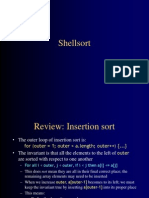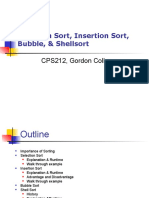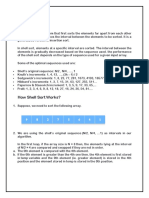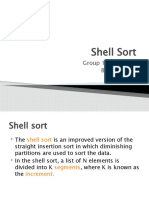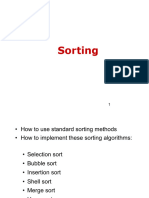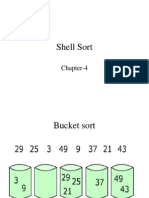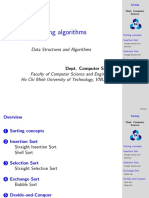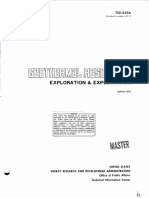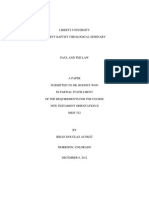0% found this document useful (0 votes)
33 views16 pagesShell Sort Group - ( (3) )
The document presents an overview of Shell Sort, an optimized sorting algorithm that enhances Insertion Sort by allowing exchanges between distant elements. It details the algorithm's mechanism, advantages, and applications, emphasizing its efficiency for large datasets and flexibility with gap sequences. Additionally, it compares Shell Sort with other sorting algorithms and discusses its implementation in C++.
Uploaded by
getacherkifilie23Copyright
© © All Rights Reserved
We take content rights seriously. If you suspect this is your content, claim it here.
Available Formats
Download as PPTX, PDF, TXT or read online on Scribd
0% found this document useful (0 votes)
33 views16 pagesShell Sort Group - ( (3) )
The document presents an overview of Shell Sort, an optimized sorting algorithm that enhances Insertion Sort by allowing exchanges between distant elements. It details the algorithm's mechanism, advantages, and applications, emphasizing its efficiency for large datasets and flexibility with gap sequences. Additionally, it compares Shell Sort with other sorting algorithms and discusses its implementation in C++.
Uploaded by
getacherkifilie23Copyright
© © All Rights Reserved
We take content rights seriously. If you suspect this is your content, claim it here.
Available Formats
Download as PPTX, PDF, TXT or read online on Scribd
/ 16




